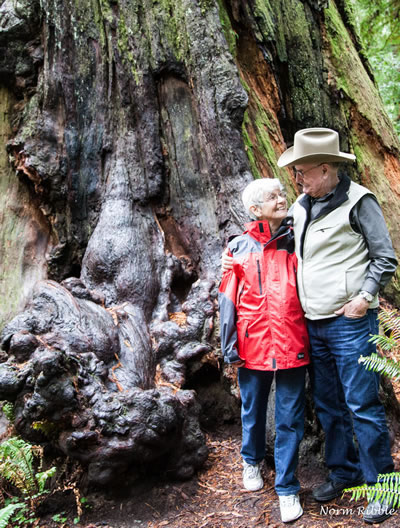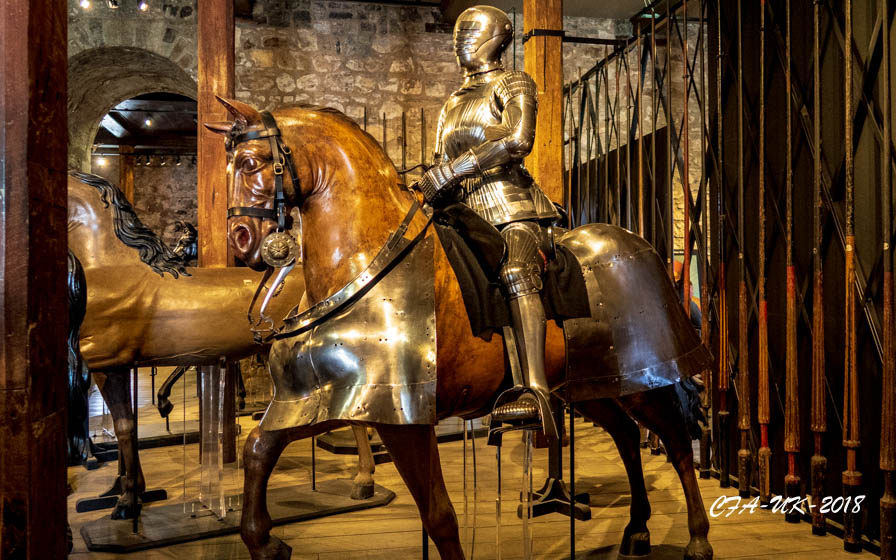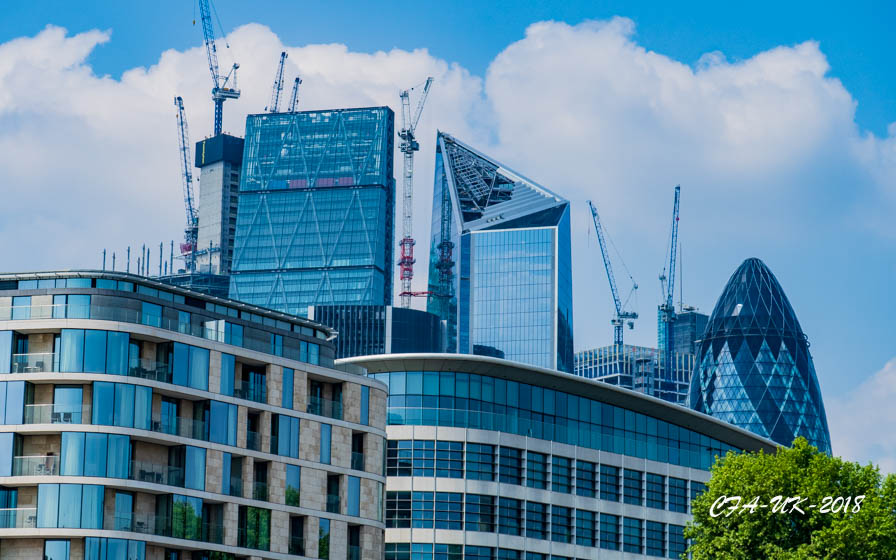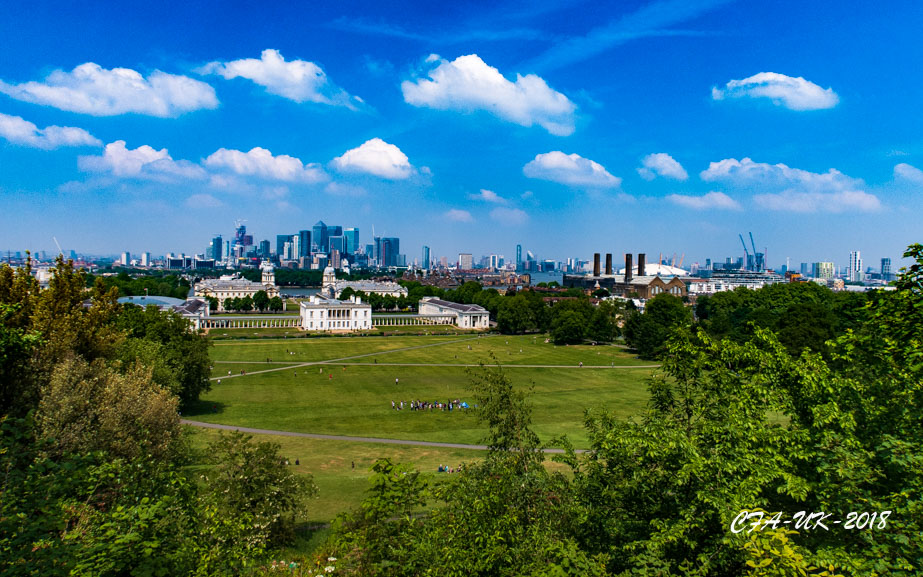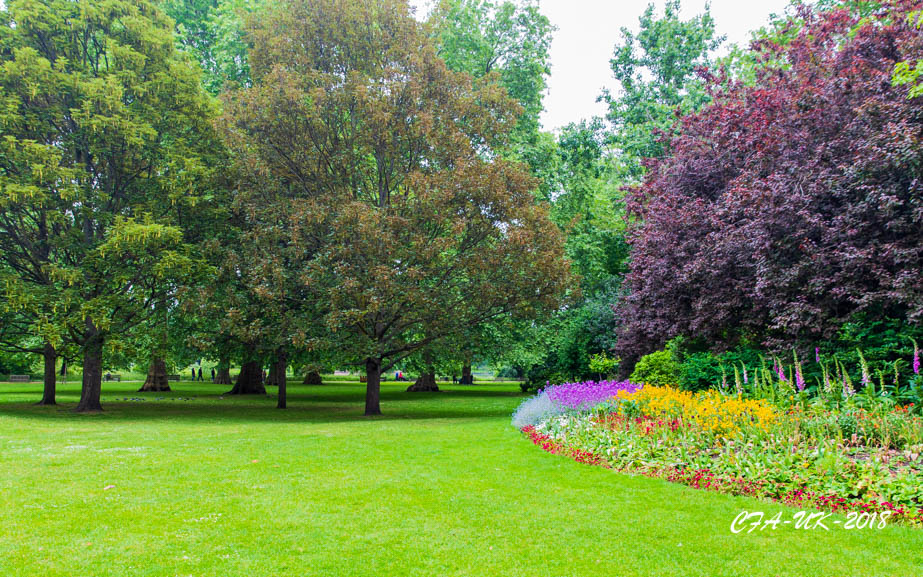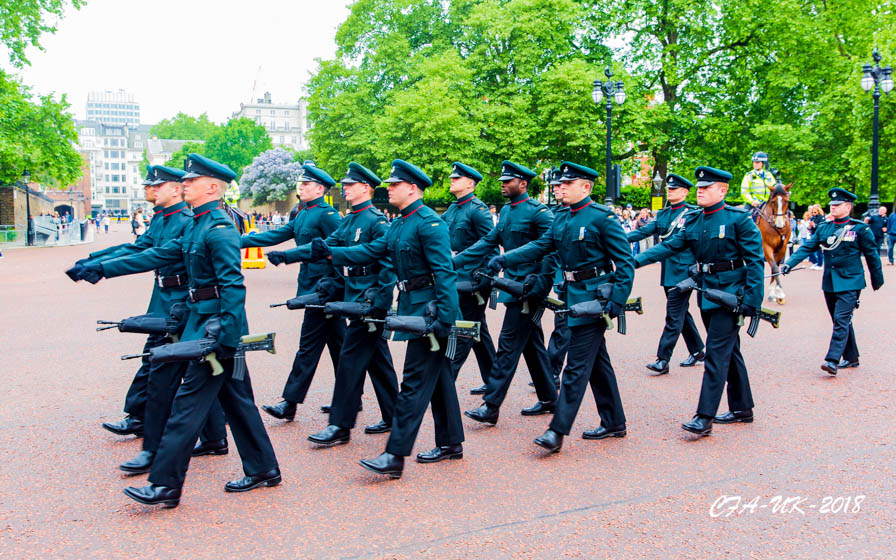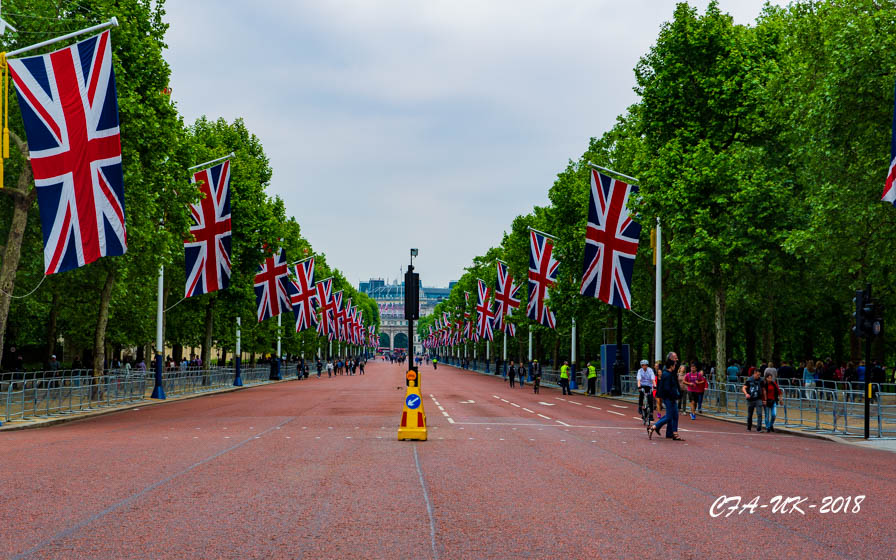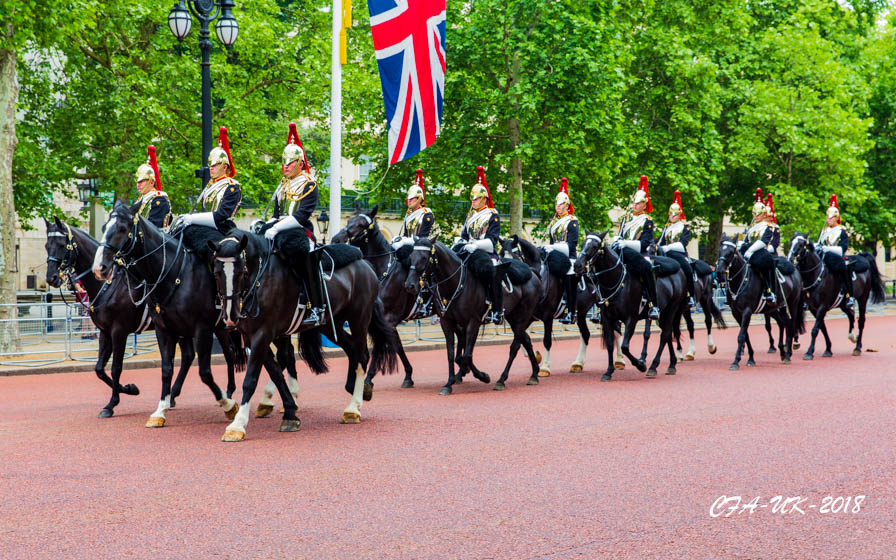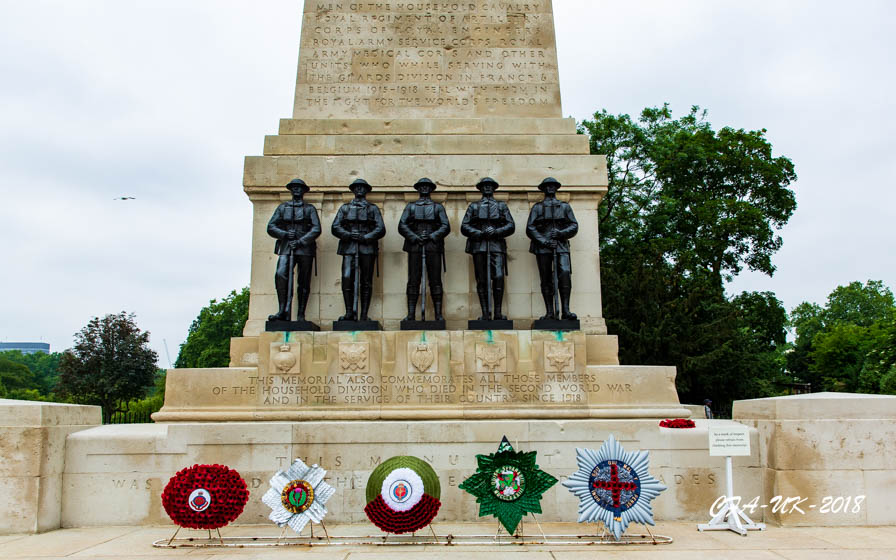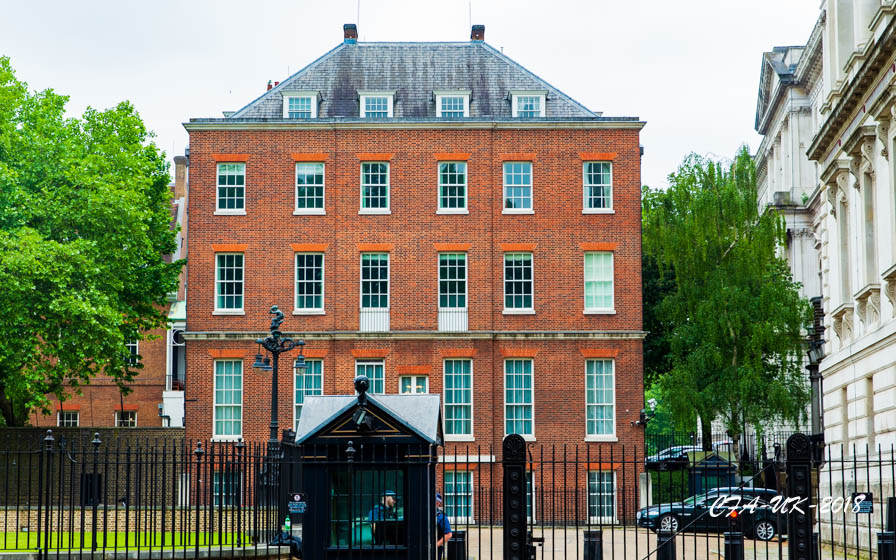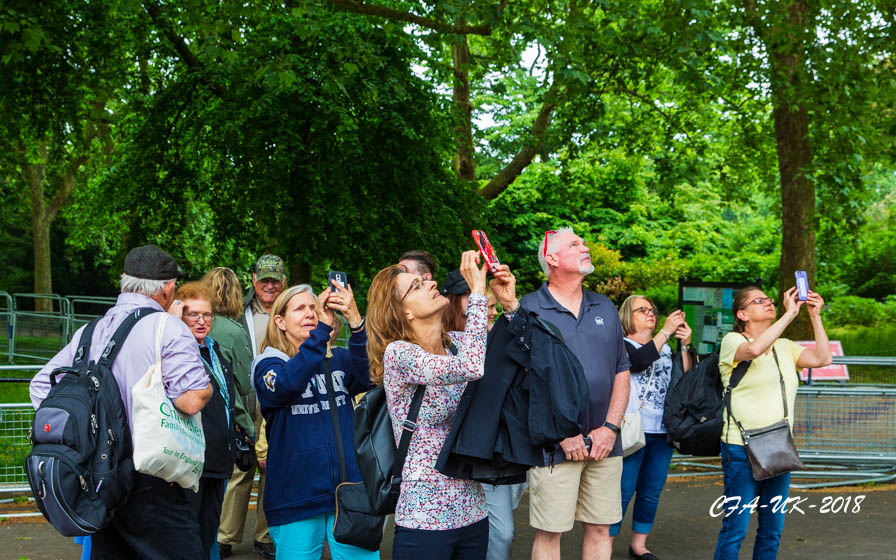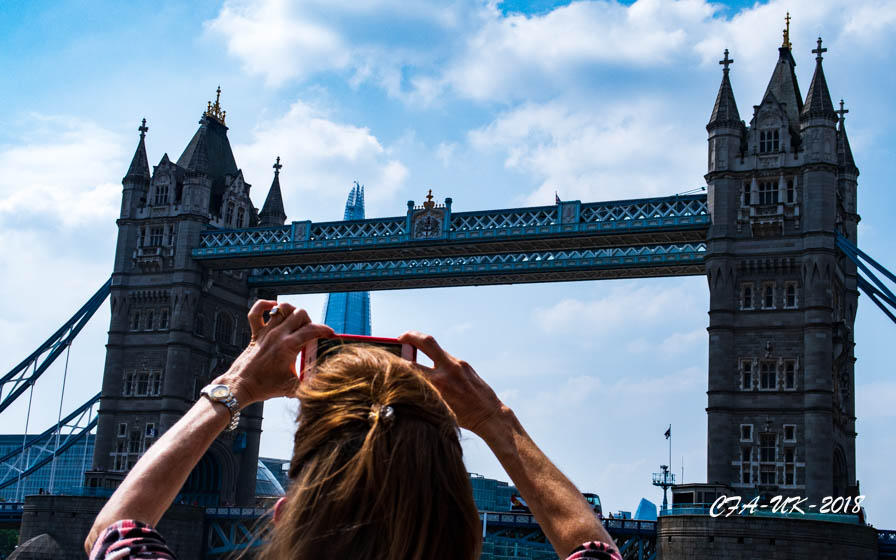The Tower of London, officially "Her Majesty's Royal Palace and Fortress of the Tower of London", is a historic castle on the north bank of the River Thames in Central London. William the Conqueror built the White Tower in 1066 as a demonstration of Norman power, sitting it strategically on the River Thames to act as both fortress and gateway to the capital.
Our tour of the compound was conducted by a most commanding "Beefeater", also known as a Yeoman Warden. He had this very deep voice that carried over all sounds. There were probably 75 or so people in our group, and his personality and voice left little doubt to who was in charge..... "The Beefeater".
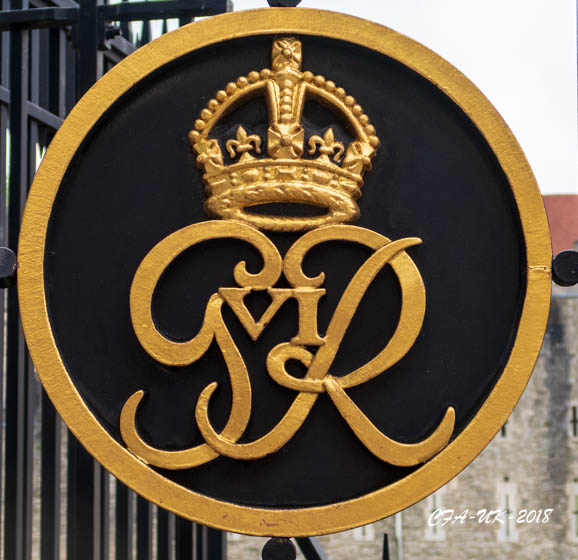
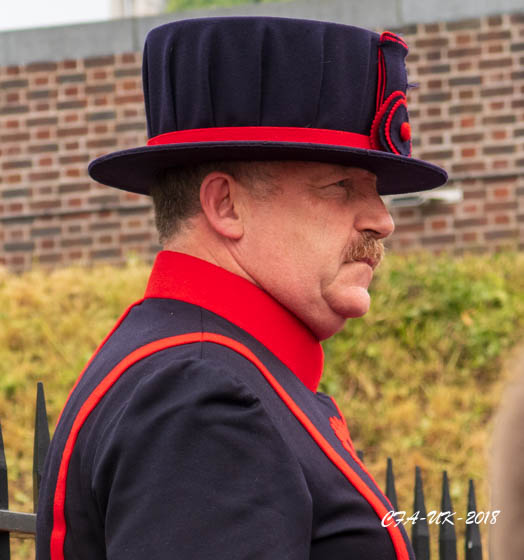 Enlarge The Great Seal of the Tower of London. Enlarge the "Beefeater"
Enlarge The Great Seal of the Tower of London. Enlarge the "Beefeater"
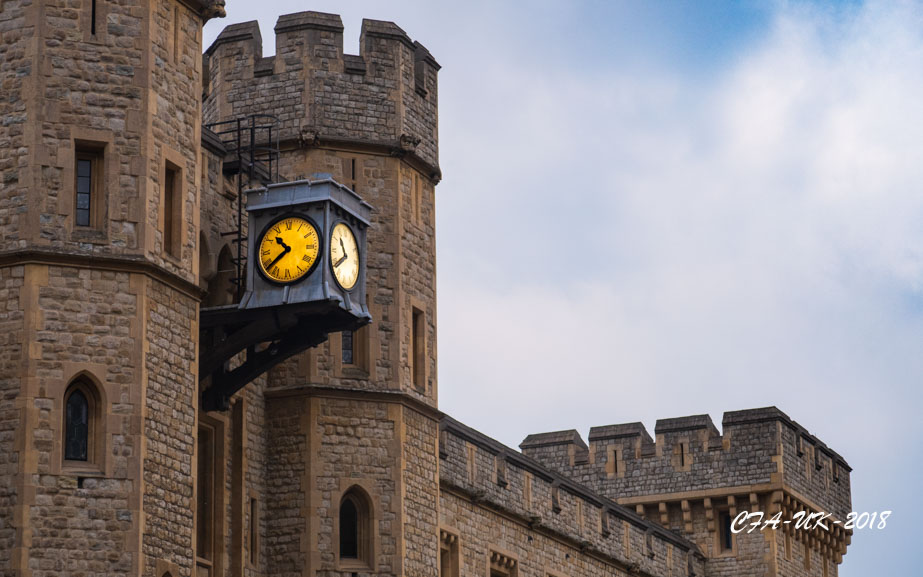

In the museum is an extraordinary display of a thousand years of British armament, victories, and memorabilia of all sorts.
Oh yes, and the Queens Crown Jewels are on display. Being quite frank it was impossible to photograph them as displayed and capture theit fineness and graciousness. The glare from the lighting, and heavy glass enclosures made for a fantastic view of the Gems, but the combination was a photographers night mare. Do me a favor and just accept the fact that the Queen Elisabeth Crown Jewels are displayed in all pomp, pageantry and with dignity.
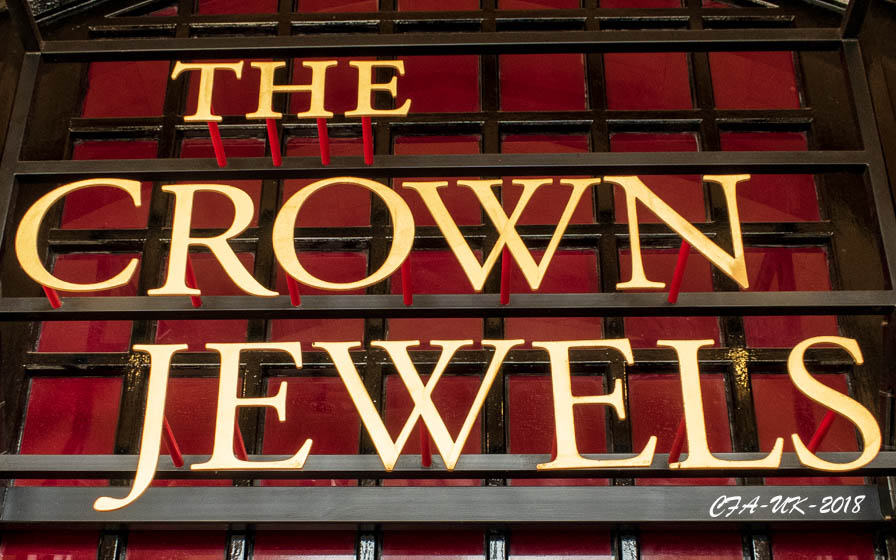
Modern London, a city in transition. One moment you are in ancient times and deep in the lure of history, and a block later you are immersed with towers of glass and cranes booms galore. London is after all Tops as a World Trade and Government Center.

We visited London in 1987 and one of my personal highlights was to rush into Greenwich Park and watch the time ball fall at 1:00 pm Mean Greenwich time. This trip we allowed all the time necessary to visit the Greenwich park and the Time museum.
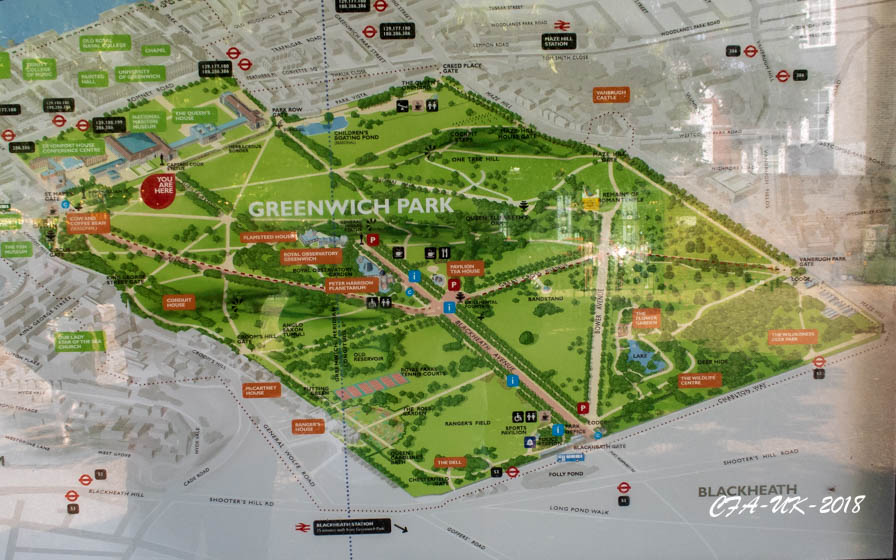
The wonderful view of London from Greenwich
The Flamsteed House and an understanding of the meaning of Mean Greenwich Time, and why any of this mattered in those time and our times.
It is named from its original generation at the Royal Greenwich Observatory and is aligned to Coordinate Universal Time, which is called either Greenwich Mean Time. As the United Kingdom developed into an advanced maritime nation, British mariners kept at least one chronometer on GMT to calculate their; longitude from the Greenwich meridian, which was considered to have longitude zero degrees, by a convention adopted in 1884
Next time you are trying to remember the difference between degrees of latitude and longitude, just think of a ladder. The latitude lines are the rungs and the longitude lines are the "long" lines that hold those rungs together. Latitude lines run east and west, longitudes run north and south.
Naval usage was the first to demand an accurate way to determine longitude. Latitude was easily determined by a sexton but there was not a way to determine how far into the unknown one might be with out knowing longitude. Great Britain, the ruler of the seas, was the nation pushing for a time piece where by longitude might be determined. The development and display of the clinometers is an eye opener and all is displayed in the Flamsteed House at Greenwich.
In 1852, the Observatory had its own special clock installed, the Shepherd master clock. This was connected to a slave clock installed at the gates to the Observatory and was the first clock ever to show Greenwich Mean Time (GMT) directly to the public. People would bring their clocks or watches to Greenwich and check them, and in turn used their clock or watch to check those of other people. The Observatory gate clock is still there for us to use today.
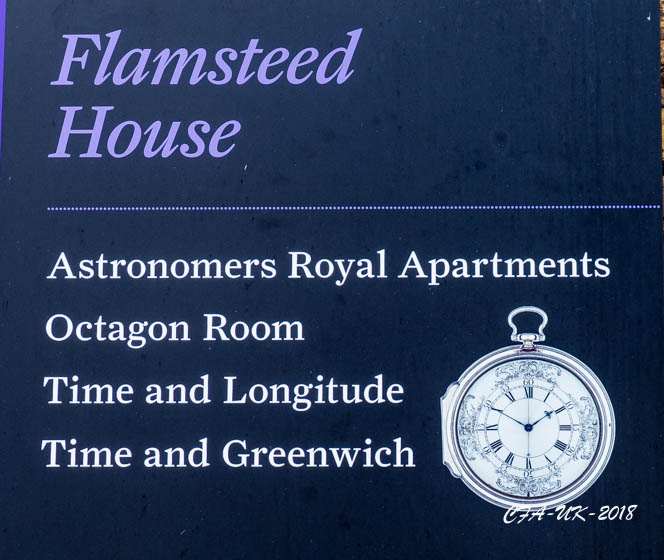
I was able to see the Time Ball drop in my short visit in 1987, but this time I was ready with my camera to try to catch in on film.
Time balls were usually dropped at 1 pm. They were raised half way about 5 minutes earlier to alert the ships, then with 2–3 minutes to go they were raised the whole way. The time was recorded when the ball began descending, not when it reached the bottom. The ships on the River Thames could set their clinometers by this dropping.
It only takes 3 second or less for the ball to spiral down. I was not as prepared as I thought, as those 3 seconds pass so quickly. But I did capture these three photos, which I'll share.
Up
Middle Stroke
Down.
This does not mean that I was satisfied, but it was either enjoy what I had captured or Come Back Another Day.
How do you know that your watch, clock or phone is telling exactly the right time? At one time, the only way was to look to the roof of the Observatory.
Picture the scene ... you are looking down from the Observatory to the Thames bustling with tall ships. It’s the Victorian era, and naval power and the British Empire are at their peak. On the decks officers stand ready, watch in hand waiting for the signal on the hill. Setting the time will be a life and death matter for these mariners.
The bright red Time Ball on top of Flamsteed House is one of the world's earliest public time signals, distributing time to ships on the Thames and many Londoners. It was first used in 1833 and still operates today.
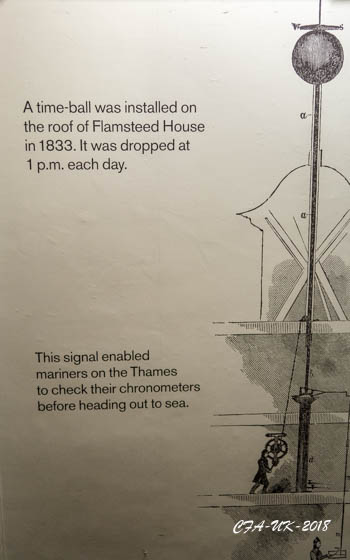
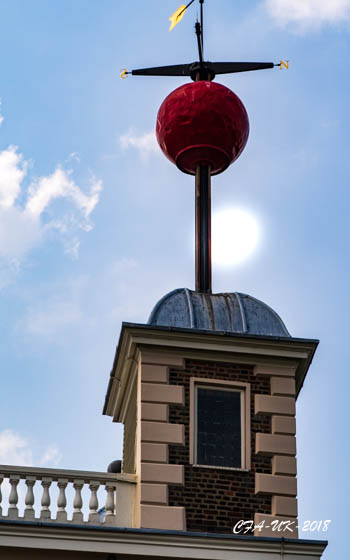 Enlarge #1; Enlarge: Time Ball at the top
Enlarge #1; Enlarge: Time Ball at the top
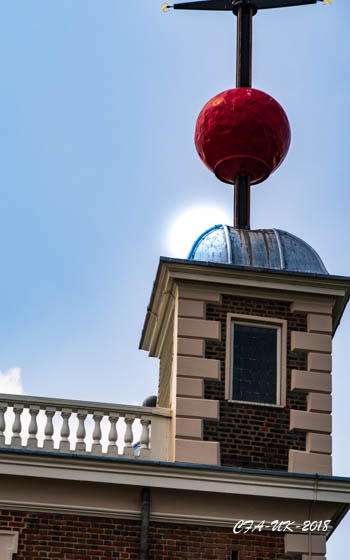
 Enlarge: Time Ball half way down; Enlarge: Time Ball down
Enlarge: Time Ball half way down; Enlarge: Time Ball down
The Changing of the Guards
Here is our lovely guide for London Park and the Changing of the Guard at Buckingham Place. Talk about Pomp and Pageantry, these Brits know how to make it happen. Notice she wasn't using an umbrella but just a water bottle, and it worked just fine.
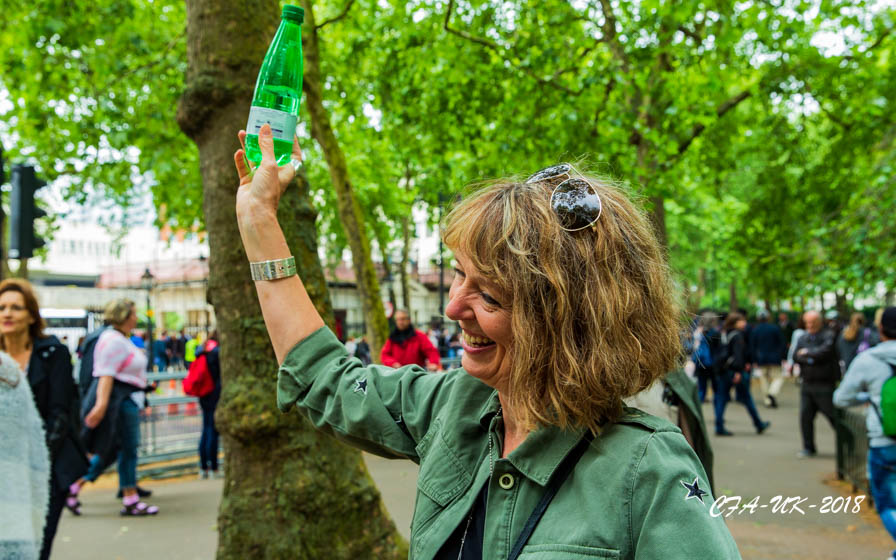
We gathered at St James Park, which is the center park in London that goes from the Governmental Buildings on Downing Street to Buckingham Palace. We must give credit to our guide, as she soon recognized that our group was not fast enough to follow the Changing of the Guards in front of Buckingham Place. So, instead she positioned us where we had an unobstructed view of the various units parading, coming and going from the change.
Princess Diana is still the favorite of Londoners. This is a display in the sidewalk in St James Park quite near Buckingham Palace.
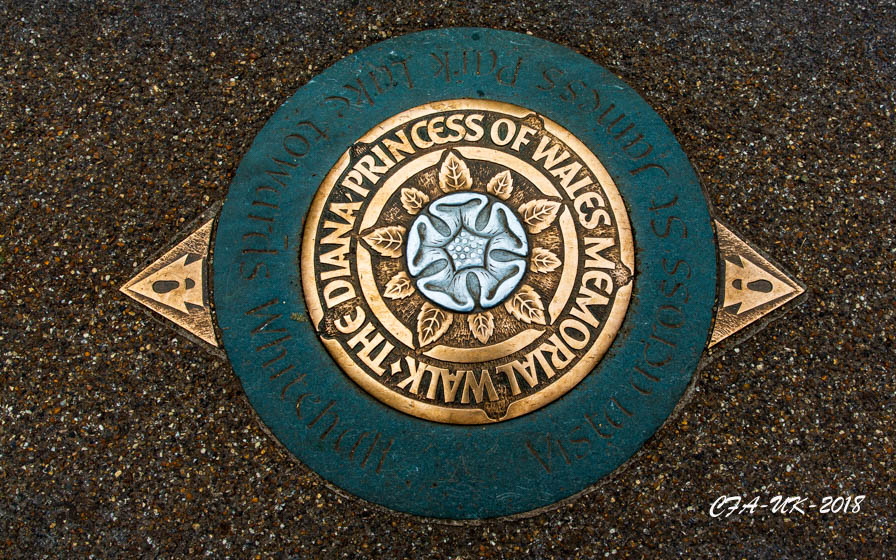
The Military Guard is marching to take their stations at Buckingham. One could not but notice the weapons they are carrying. These gentlemen are in the protection business.
Grenadier Guards.

The pride of the United Kingdom the Union Jack.

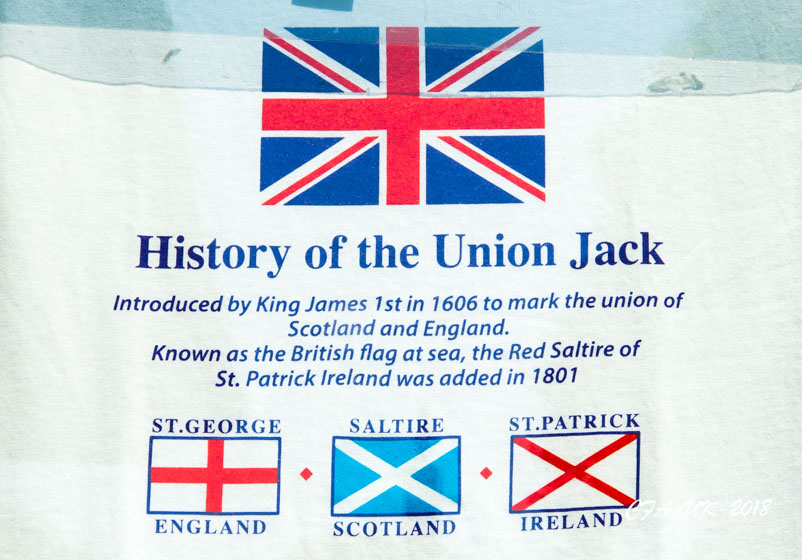
We were mid way on the thoroughfare leading to Buckingham Palace. What a picturesque view.
This Mounted Dragoon Troop has justs been relieved in the ceremony of the Changing of the Guards.
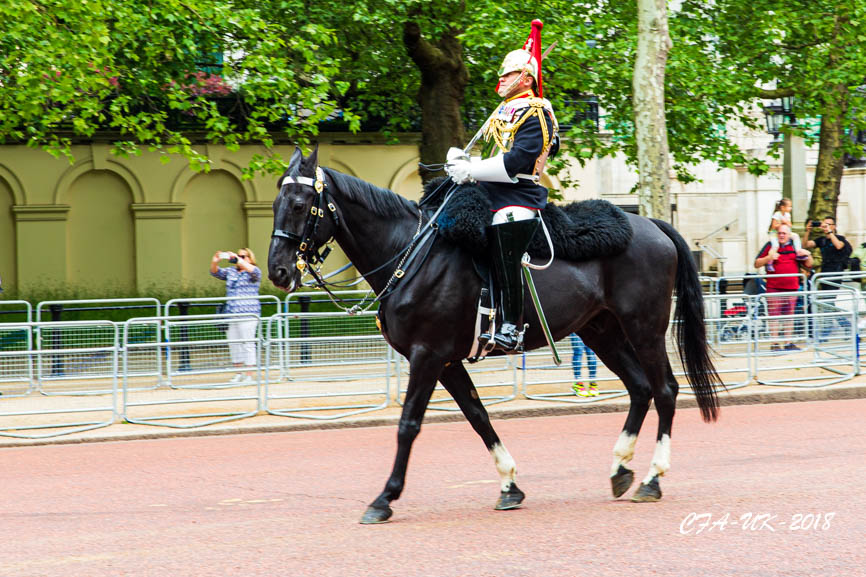
The steed on the left is now famous, as he and his Policeman were selected as escorts for Harry and Megan and the Royal Wedding just a few day previously at Windsor. They should have been charging for the photos taken..
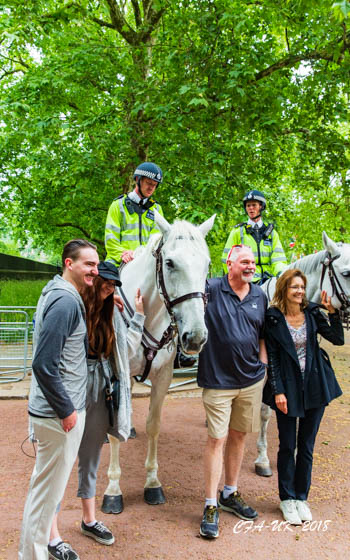
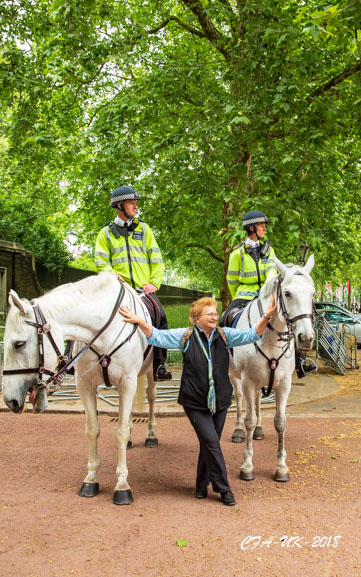
Now Theresa chose to comfort the rejected wedding horse and its mounted police lady. To heck with the horse look at her riders million dollar smile.
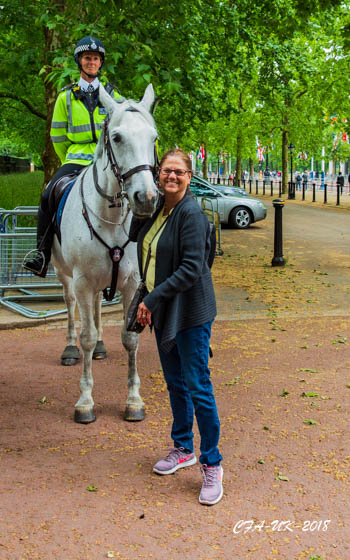
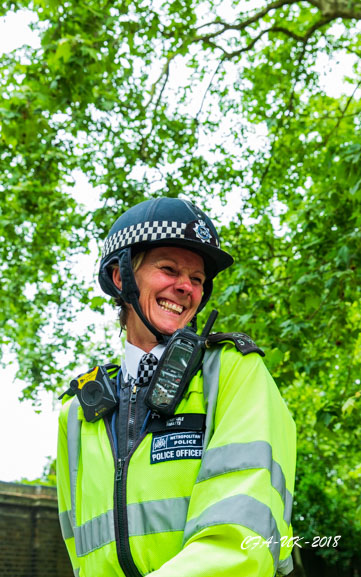
Theresa being a good cousin looking after we "Matures."
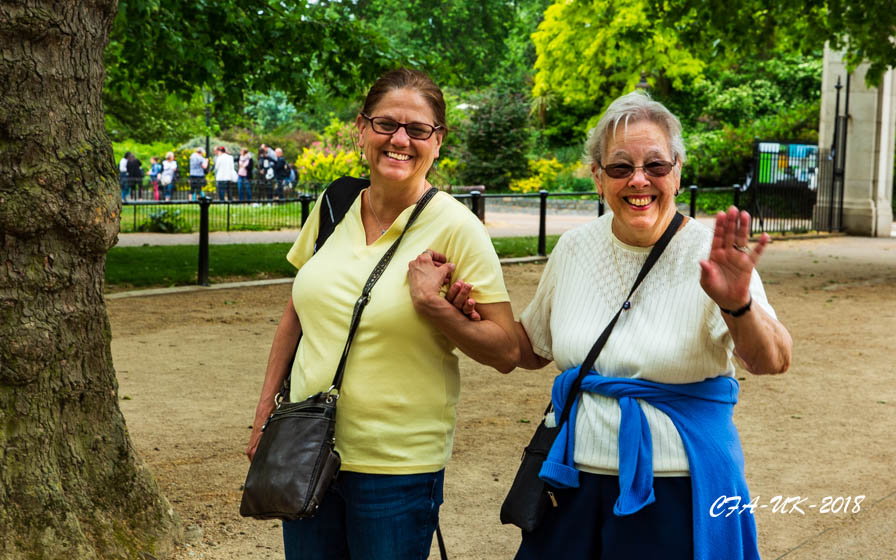
Karrie and Robin: We didn't find these two beautiful ladies over here, we brought them from home!
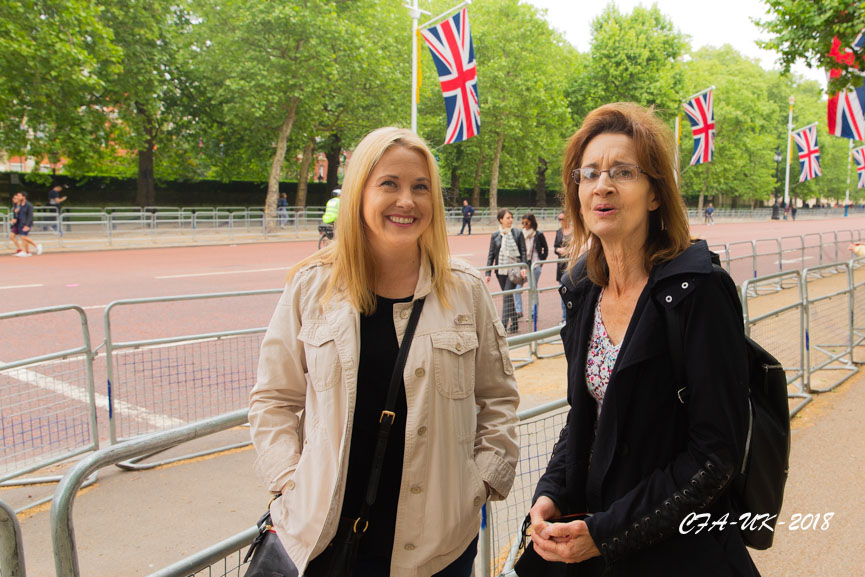
Great Britain's World War Memorial honoring all who have served since WWI. It is located immediately in front of Buckingham Palace..
OK, You history buffs, who made this house so famous? Let me give you a hint: the address is Number One Downing Street. If you guessed Winston Churchill, then you know your history.. There is an underground connection between number One Downing Street and the structure on the right, the War Room made world renown in WWII.
We arrived at Westminster Abbey to visit and absorb its history. Friends the entry lines were long, a 2 hour waiting-time, and we being an improvising group noticed that immediately across the street was the Methodist Central Hall and Church. They were serving lunch, so being good Methodists, we led the way and enjoyed a nice lunch with John Wesley
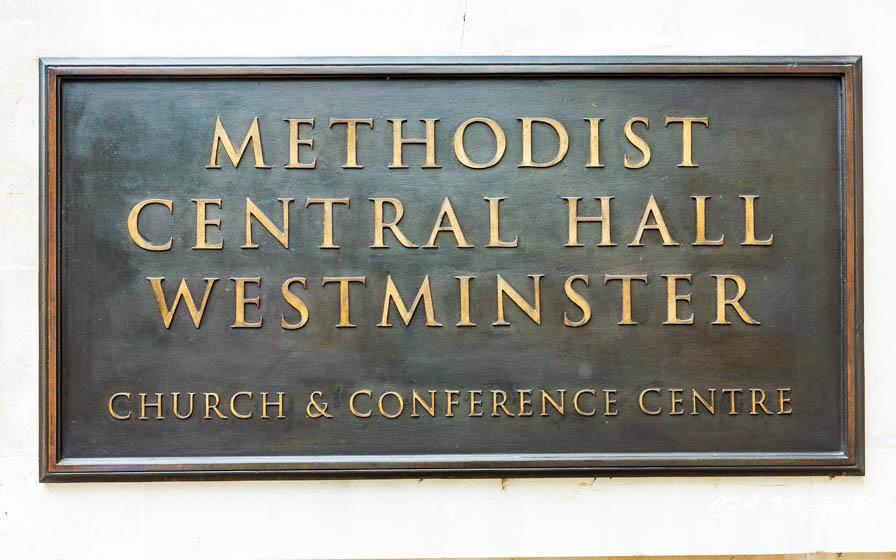
Westminster Methodist Church. No waiting line
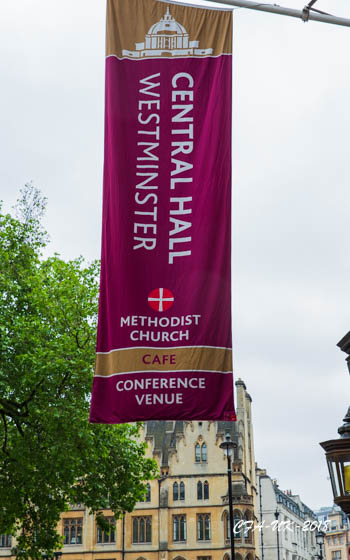
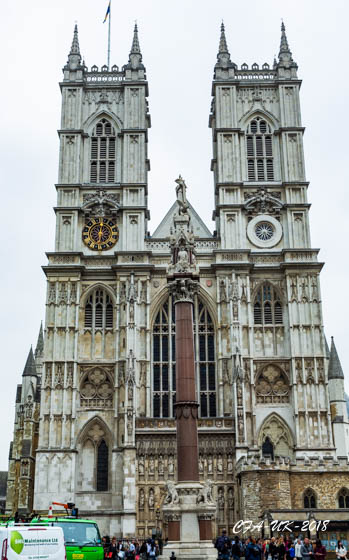
For the life of me I don't recall what these photographers are shooting, but is was spectacular.
We toured London on a River Thames ship, and I happened to catch Robin taking a picture of the London Tower Bridge.
Oh! we had fun in London Town, Paul McCartney and the Wings in their recording of London Town.
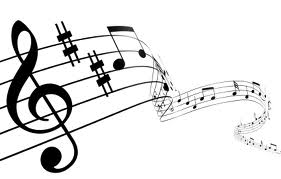
Someone, somewhere has to know
Silver rain was falling down upon the dirty ground of London town
Come on Willie sing us another verse, and we’ll move on down the road.
